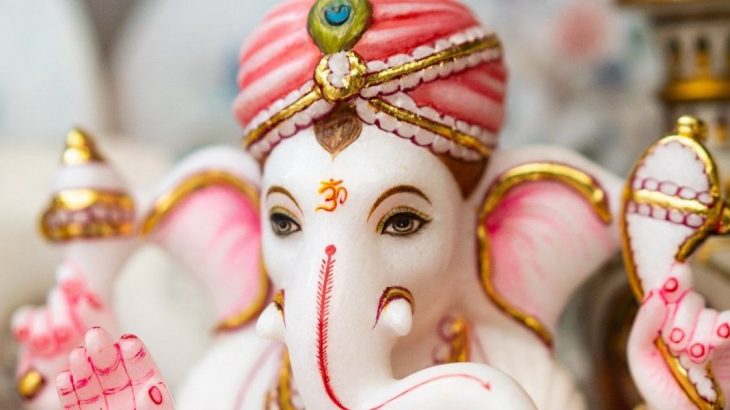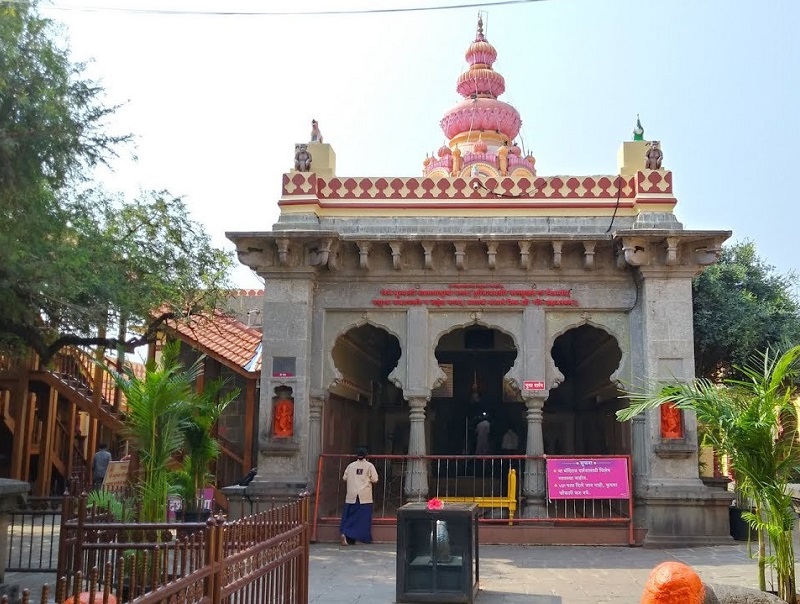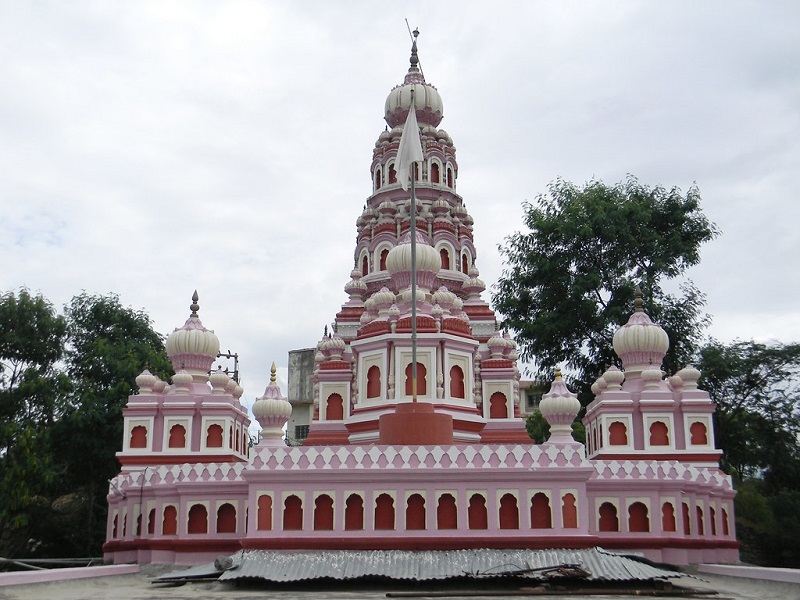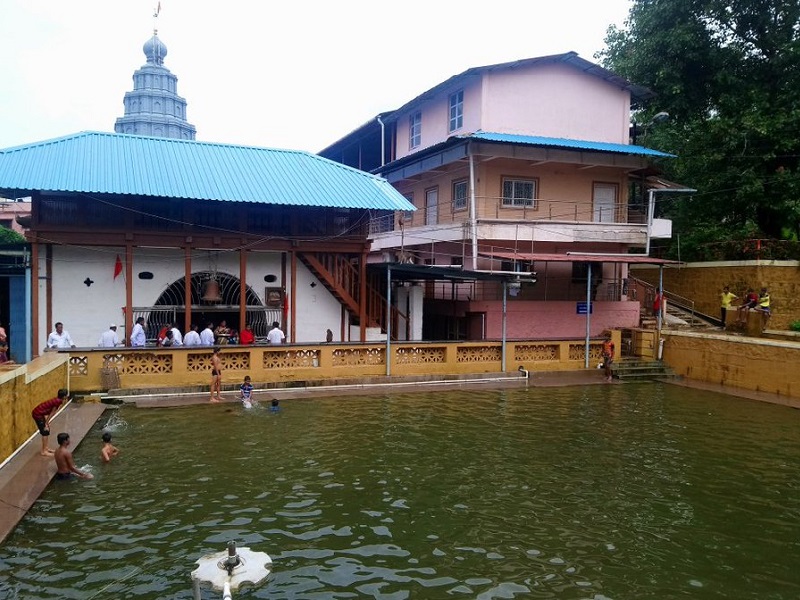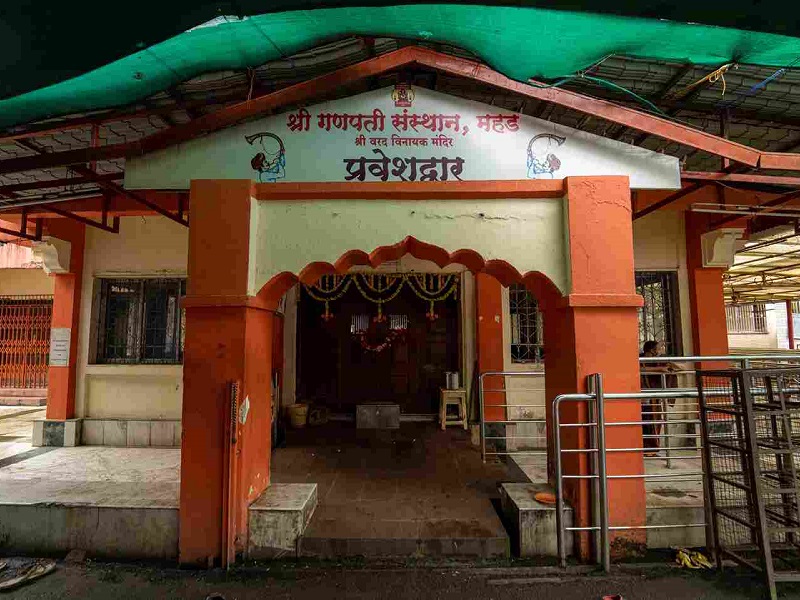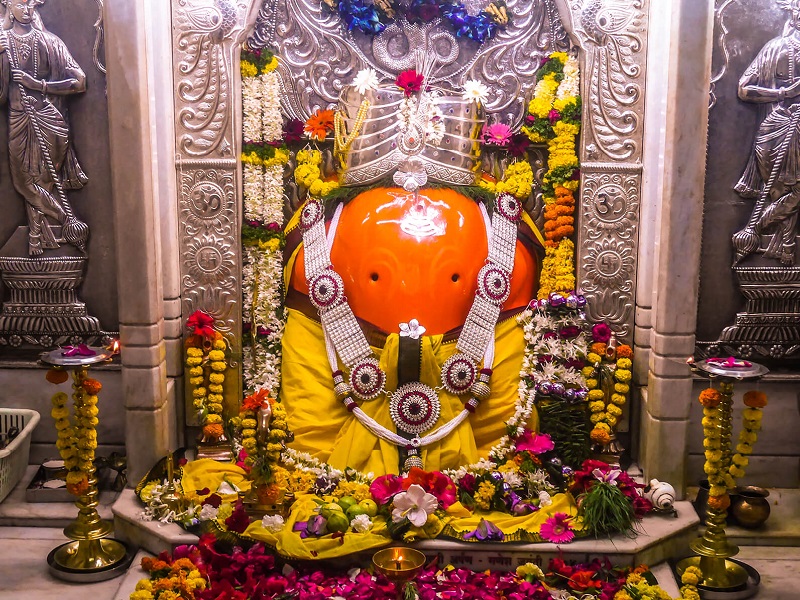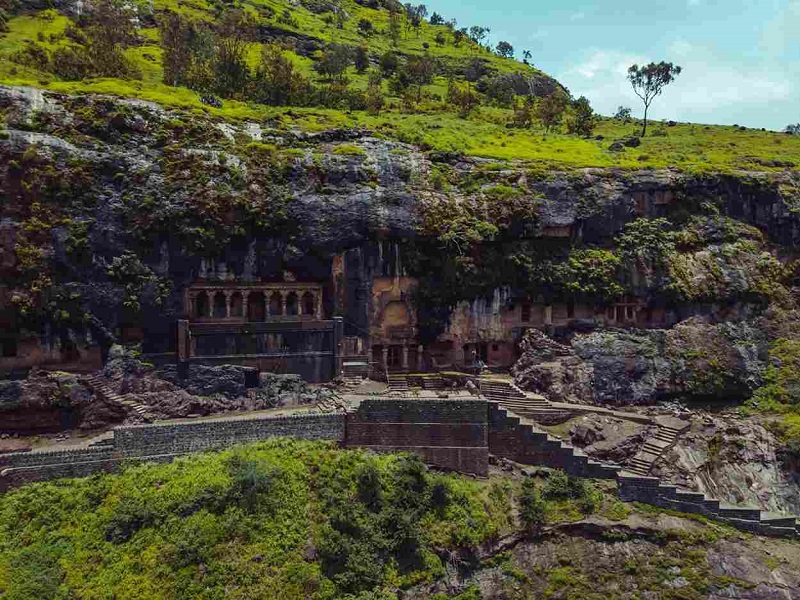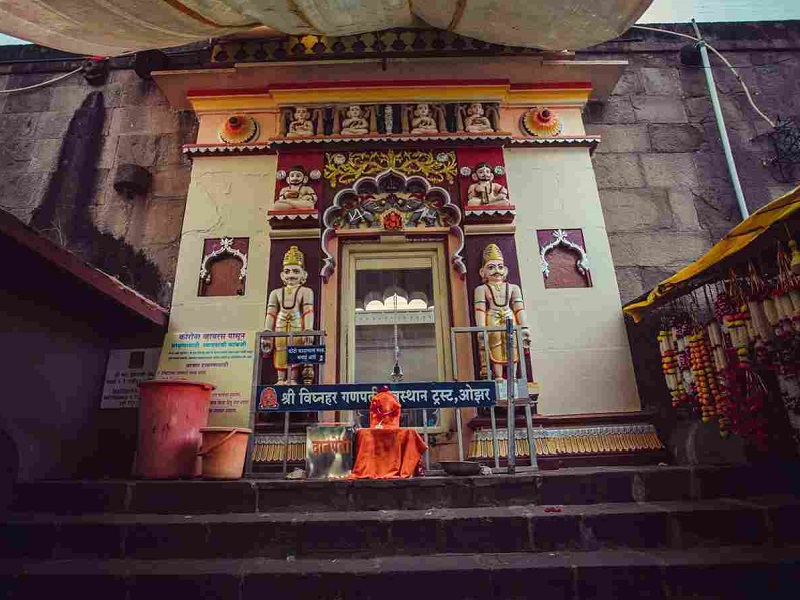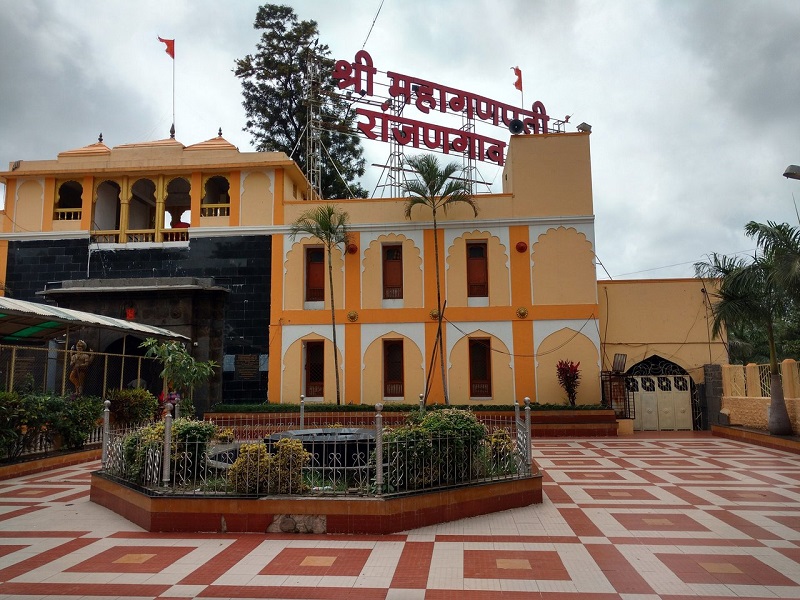Blessed with lush green hill stations, tranquil beaches, fascinating historical sites, and numerous attractions filled with thrilling activities, Maharashtra is one of the best places to visit in India. Apart, the state of Maharashtra is also dotted with many sacred temples, especially Lord Ganesha temples. Fondly called Ashtavinayaka Temples, each of these 8 abodes of Lord Ganesha holds a significant place in the local history, and all the idols are Swayambhu (self-originated) and Jagrut. Lord Ganesha who is regarded as the God of wisdom is worshipped before starting any new work as he removes all the obstacles for his devotees. If a temple run for Ganesha Chaturthi is high on your mind, here is the list of most famous Ganesha temples or Ashtavinayaka temples that must visit as part of Maharashtra tour packages.
Moreshwar Temple, Moregaon
Dedicated to Lord Ganesha, Sri Moreshwar temple, also known as Sri Mayureshwar Temple, is a Hindu temple located at Moregaon in the Pune district of Maharashtra. This temple is considered to be the first temple among the Ashtavinayaka temples in Maharashtra and among the popular pilgrimage places to visit in Pune. The temple flourished due to the patronage of the Peshwa rulers and descendants of Morya Gosavi. The presiding deity Lord Mayureshwar is flanked by his consorts Riddhi, and Goddess Siddhi in the sanctum sanctorum of the temple. The entrance of the temple contains a 6 feet mouse, the vehicle of Lord Ganesha and the temple also houses the image of a peacock. The assembly hall of this temple contains 23 idols of Lord Ganesha, each depicting different forms of the Lord. The other important deities of this temple are Lord Shiva, Goddess Parvati, Lord Vishnu, Lord Rama, Goddess Sita, Lord Vignesha, Chintamani, and Lord Brahma.
Book Here : Pune Tour Packages
Siddhivinayak Temple, Siddhatek
Stands on a small hillock called Siddhatek, Siddhivinayak Temple is the second temple in the Ashtavinayaka Yatra, and among the top places of pilgrimage in Maharashtra. Dedicated to Lord Ganesha, the temple is situated on the northern bank of the river Bhima in Ahmednagar. The temple popularly known as Siddhivinayak because Bhagwan Vishnu acquired Siddhi (special powers) here, and is also said that since the god fulfills every wish of his devotees, he is called the Siddhivinayak. Devi Ahilyabai Holkar of Indore built the present temple in the late 18th century and the other structures around the temple were built by different people in the later years. Built using black stone, the main idol is about 3 feet tall and 2.5 feet wide. It is the only idol amongst all eight with the trunk on the right side that makes Siddhivinayak special. Ganesh Chaturthi in the month of Bhadrapada is the major festival celebrated here with much fervor.
Ballaleshwar Temple, Pali
Sandwiched between the famous fort Sarasgad and the river Amba, Ballaleshwar temple is one of the popular pilgrimage sites near Mumbai. Located in Pali village of Raigad district, it is the third temple in the Ashtavinayaka series of Temples dedicated to Lord Ganesha. Originally, the temple was built in wood and later rebuilt with stone in 1780. The presiding deity of the temple is Lord Ballaleshwar (Lord Ganesha), who dressed up as a Brahmin. It is the only idol of Lord Ganesha in the world to be in such attire. Built the shrine in the shape of ‘Shri’, sun rays fall every day on the idol during the worship. It can be visited as part of Lonavala tour packages.
Also Read : Popular Places to visit near Mumbai
Varad Vinayak Temple, Mahad
Varad Vinayak Temple in Mahad is another prominent Ashtavinayaka temple located in Maharashtra. It is the fourth Ganesha temple to visit as part of the Ashtavinayaka Darshan Tour, and among the top places to visit near Mahabaleshwar. The idol here is swayambu (self-originated) which was found in the adjoining lake in 1690 AD and later, the temple was built (restored) by Peshwa General Ramji Mahadev Biwalkar in 1725AD. Here, Lord Ganesha is worshipped as Varad Vinayak who fulfills all desires and grants all boons. There is an oil lamp or Nanda deep in this shrine which is said to be burning continuously since 1892. Devotees can enter the Garbhagriha in this temple and pay their homage and respects to the idol. However, a Gomukh is seen on the north side of the temple from which flows the holy water, and also a holy pond can be seen on the west side of the temple.
Book Here : Mahabaleshwar Tour Packages
Chintamani Temple, Theur
Situated at the confluence of three small rivers named Bhima, Mula, and Mutha, the Chintamani Ganesh Temple at Theur is one of the largest and most famous temples in Maharashtra and the fifth Ganesha temple in the Ashtavinayaka Yatra. Ganesha is worshiped by the name ‘Chintamani’ in this temple as it is believed he provides deliverance from worries. Constructed by Dharanidhar Dev, the son of Moraya Gosavi, the idol of Lord Chintamani is self-emanated (swayambhu murti) and is seated in a cross-legged position with his trunk turned left and beautiful diamonds studded in his eyes. This beautiful temple was built during the reign of Peshwas, almost 100 years back, and is believed that the famous ruler Shri Madhavrao Peshwa spent his last days at the Temple. There are several other temples in the complex including Mahadeva Mandir, Vishnu-Lakshmi Mandir, and Hanuman Mandir. It is one of the popular places to visit near Pune.
Must Visit : Pilgrimage Sites near Pune
Girijatmaj Temple, Lenyadri
Girijatmaj Temple is one of the Ashtavinayaka temples located at Lenyadri hills at Junnar in the Pune district of Maharashtra. It is the sixth Ganesha Temple to be visited on the Ashta Vinayaka Mandir Pilgrimage yatra and is among the popular places of pilgrimage in India. According to legend, it is the same place where Goddess Parvati meditated for 12 years for a child. Hence, the temple is known as ‘Girijatmaj’ – ‘Girija’ meaning Devi Parvati and ‘Aatmaj’ meaning son. The idol of Lord Ganesha is believed to be in an infant form at this temple of Junnar Caves, among the popular places to visit near Aurangabad. Dates back to the 1st century AD, the temple is carved out of a single stone and was built in such a way that no room remains dark throughout the day even though it is a closed cave complex. Tourists can find the rock statue of Shri Girijatmaj Lenyadri Ganapati in one of the 18 rooms present in the temple hall (also known as Sabhamandap). One needs to climb a flight of 338 stairs to reach the main sanctum of the temple.
Must Visit : Hill Stations in Maharashtra
Vighnahar Temple, Ozar
The Vighnahar Ganpati Temple or also known as Vigneshwara Temple of Ozar is one of the Ashtavinayaka temples located in the Junnar taluk of Pune District, Maharashtra. Situated on the banks of the Kukadi River, it is the seventh temple to be visited in the Ashtavinayaka Darshan tour or yatra, and among the most popular pilgrimage places to visit near Surat. The temple was built by the Peshwa ruler Chimaji Appa after defeating the Portuguese in the late 1700s. Encircled by a wall and a wide gate, the idol of the deity is believed to be Swayambhu and is worshipped here in the form of Vigneshwara, which means ‘Remover of Obstacles’. It is the only temple among the Ashtavinayaka Temples with a golden dome (Sonayacha Kalash) and pinnacle. Along with Lord Ganesha, the idols of Goddess Siddhi and Goddess Riddhi, is adorned with diamonds and emeralds.
Maha Ganapati Temple, Ranjangaon
Sri Maha Ganapati Temple is situated at Ranjangaon in Shirur Taluk of Pune district. This is one of the Ashtavinayaka temples in Maharashtra and among the popular places to visit as part of the Pune packages. It is the eighth and the last temple to be visited in the Ashtavinayaka Darshan tour or yatra. The stone pillars of the temple indicate that the temple was built during the 9th or 10th century during the rule of Peshwas. According to the legend, the village Ranjangaon is considered to be the place where Shiva himself sought the blessings of Ganesh and ultimately destroyed Tripurasur. Seated on a lotus with his consorts Siddhi and Riddhi, the idol is facing east in a cross-legged sitting posture with broad forehead and the trunk turned towards the left. It is said that the original idol is hidden in the basement, having 10 trunks and 20 hands and is called Mahotkat. Among the prominent places to visit near Kolhapur, the temple celebrates a special 6-day festival on the occasion of Ganesh Chaturthi, during which Mahabhog is offered to the temple deity on the fifth day. Large crowds gather during this festival to witness the wrestling matches which are specially organized at this time.
